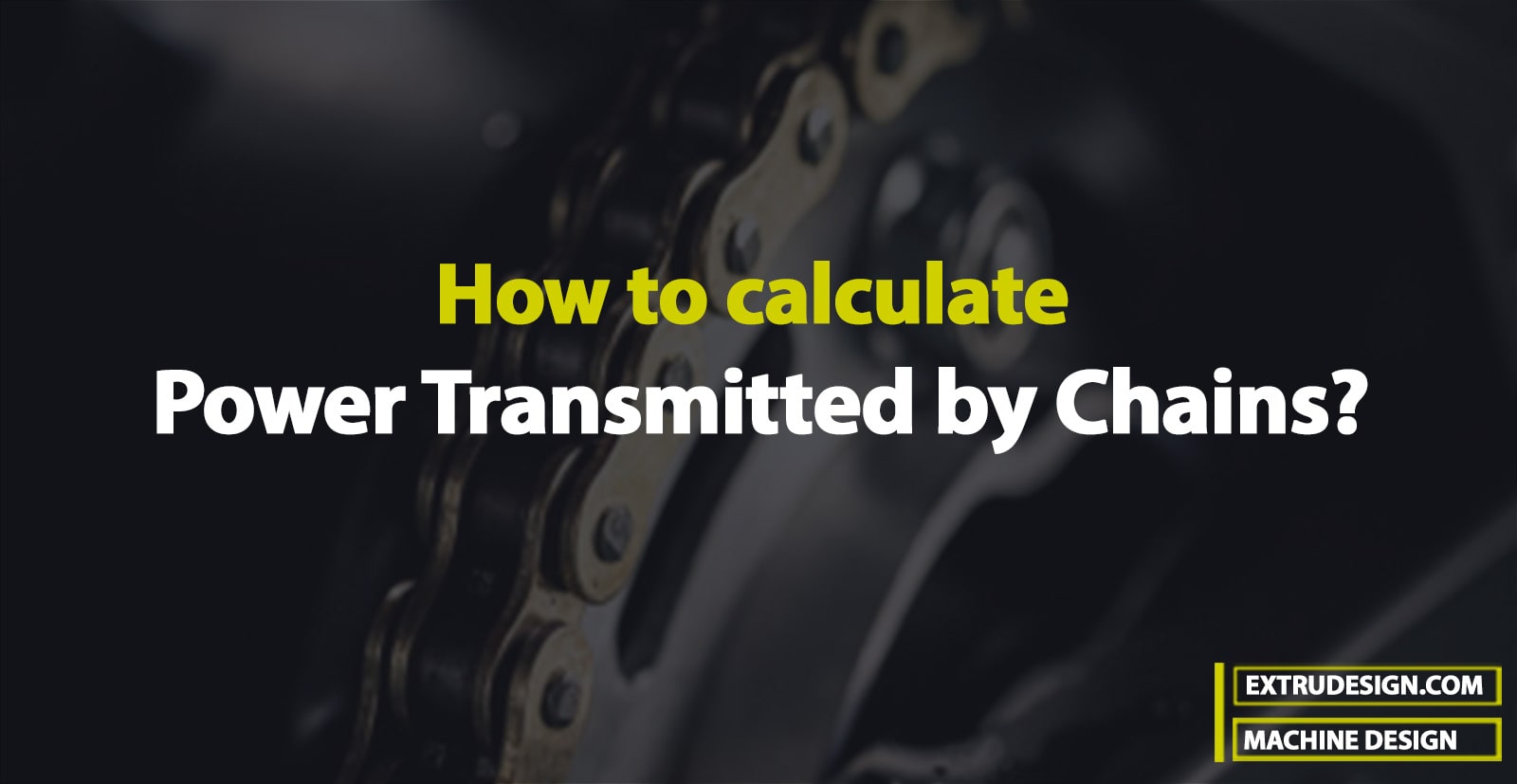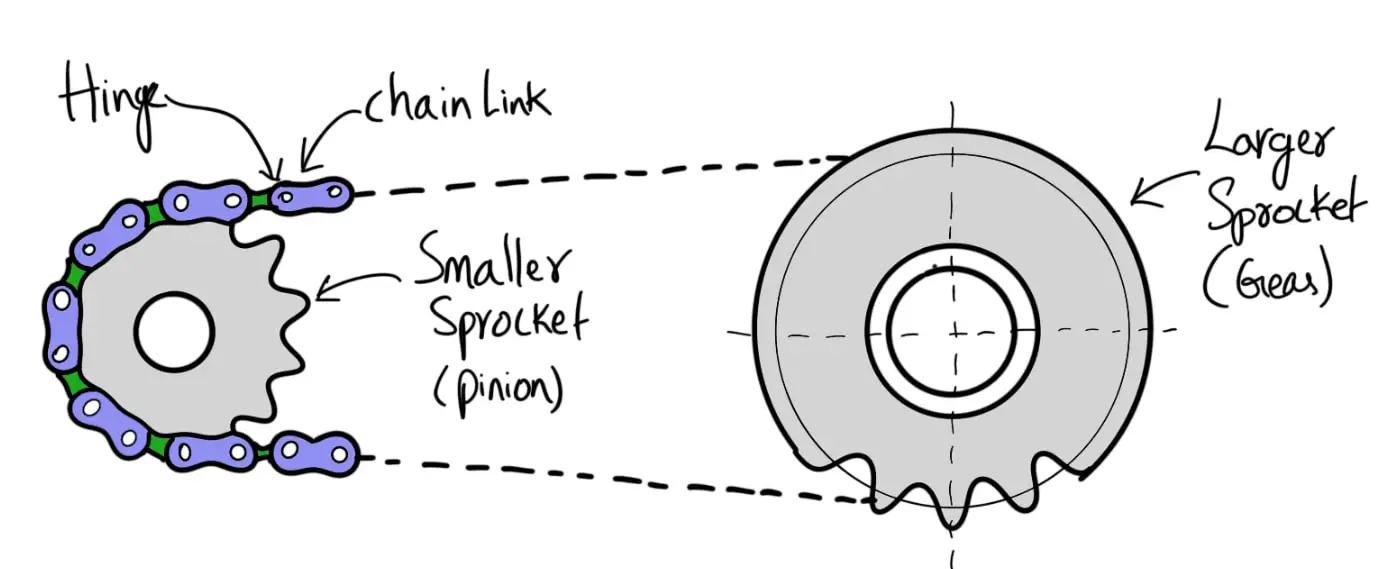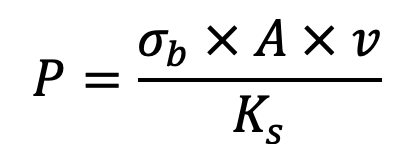We have discussed belt drives and rope drives that slipping may occur. To avoid slipping, steel chains are used. The chains are made up of a number of rigid links which are hinged together by pin joints to provide the necessary flexibility for wrapping around the driving and driven wheels. These wheels have projecting teeth of special profile and fit into the corresponding recesses in the links of the chain. The toothed wheels are known as sprocket wheels or simply sprockets (These wheels resemble spur gears). The sprockets and the chain are thus constrained to move together without slipping, ensuring a perfect velocity ratio. We have already discussed Chain Drive Terminology, Classification, and Advantages in the previous article. Let us discuss how we can calculate Power Transmitted by Chains.

Chain Drive: Chains and Sprockets
The chains are mostly used to transmit motion and power from one shaft to another when the center distance between their shafts is short such as in bicycles, motorcycles, agricultural machinery, conveyors, rolling mills, road rollers, etc. The chains may also be used for long center distances of up to 8 meters. The chains are used for velocities up to 25m/s and power up to 110 kW. In some cases, higher power transmission is also possible.
Following is a schematic Representation of a Chain Drive that comprises Sprockets and a chain.

Let us see how we can calculate the power transmitted by Chain Drives.
Power Transmitted by Chains
The power transmitted by the chain based on the breaking load is given by

Where
Wb = Breaking load in newtons
v = Velocity of chain in m/s
n = Factor of safety
Ks = Service factor = K1 .K2 .K3
The power transmitted by chains based on the bearing stress is given by

Where
σb = Allowable bearing stress in MPa or N/mm2
A = Projected bearing area in mm2
v = Velocity of chain in m/s
Ks = Service factor
The power rating for simple roller chains depending up on the speed of the smaller sprocket is shown in the following table.
Power rating (in kW) of simple roller chain
| Speed of smaller sprocket or pinion (r.p.m.) | Power (kW) | ||||
| 06 B | 08 B | 10 B | 12 B | 16 B | |
| 100 200 300 500 700 1000 1400 1800 2000 | 0.25 0.47 0.61 1.09 1.48 2.03 2.73 3.44 3.80 | 0.64 1.18 1.70 2.72 3.66 5.09 6.81 8.10 8.67 | 1.18 2.19 3.15 5.01 6.71 8.97 11.67 13.03 13.49 | 2.01 3.75 5.43 8.53 11.63 15.65 18.15 19.85 20.57 | 4.83 8.94 13.06 20.57 27.73 34.89 38.47 – – |
The service factor (KS) is the product of various factors, such as load factor (K1), lubrication factor (K2), and rating factor (K3). The values of these factors are taken as follows:
- Load factor (K1)
- = 1, for constant load
- = 1.25, for variable load with mild shock
- = 1.5, for heavy shock loads
- Lubrication factor (K2)
- = 0.8, for continuous lubrication
- = 1, for drop lubrication
- = 1.5, for periodic lubrication
- Rating factor (K3)
- = 1, for 8 hours per day
- = 1.25, for 16 hours per day
- = 1.5, for continuous service
Permissible Speed of Smaller Sprocket
The following table shows the permissible speed of the smaller sprocket or pinion (in r.p.m.) for the bush roller and silent chain corresponding to different pitches.
| Type of Chain | Number of teeth on sprocket pinion | Pitch of chain (p) in mm | ||||
| 12 | 15 | 20 | 25 | 30 | ||
| Bush roller chain | 15 19 23 27 30 | 2300 2400 2500 2550 2600 | 1900 2000 2100 2150 2200 | 1350 1450 1500 1550 1550 | 1150 1200 1250 1300 1300 | 1000 1050 1100 1100 1100 |
| Silent chain | 17 – 35 | 3300 | 2650 | 2200 | 1650 | 1300 |
Please note that the chain velocity for the roller chains may be as high as 20 m/s if the chains are properly lubricated and enclosed, whereas the silent chain may be operated up to 40 m/s.
Maximum Speed for Chains
The maximum allowable speed for the roller and silent chains, depending upon the number of teeth on the smaller sprocket or pinion and the chain pitch is shown in the following table.
| Type of chain | Number of teeth on the smaller sprocket (T1) | Chain pitch ( p) in mm | ||||
| 12 | 15 | 20 | 25 | 30 | ||
| Roller chain | 15 19 23 27 30 | 2300 2400 2500 2550 2600 | 1900 2000 2100 2150 2200 | 1350 1450 1500 1550 1550 | 1150 1200 1250 1300 1300 | 1100 1050 1100 1100 1100 |
| Silent chain | 17–35 | 3300 | 2650 | 2200 | 1650 | 1300 |
Note: The r.p.m. of the sprocket reduces as the chain pitch increases for a given number of teeth.
Let us know your thoughts on this article in the comment section below.

Leave a Reply